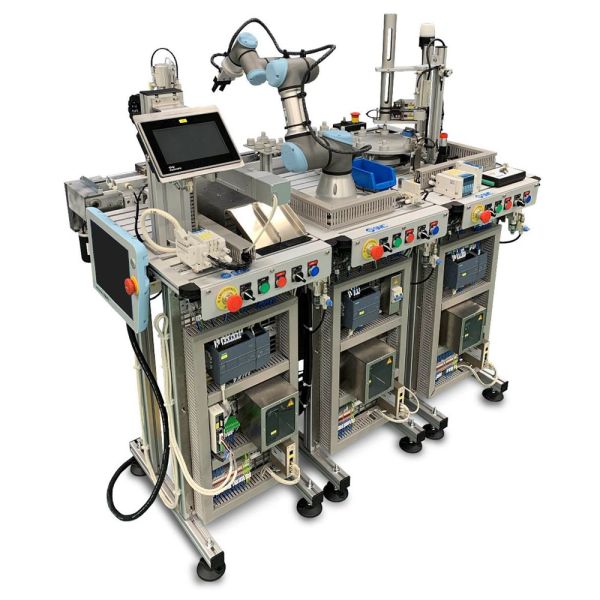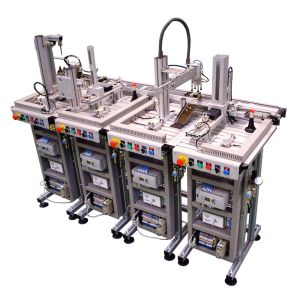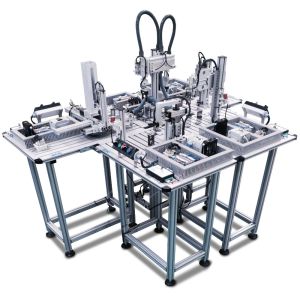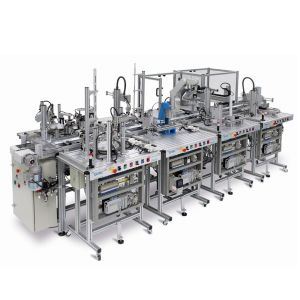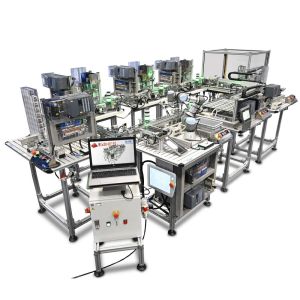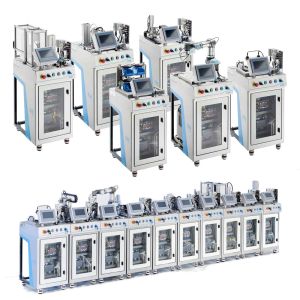Specifications are subject to change without prior notice.
FAS-200 SE with Industry 4.0 technologies
Categories: T Levels & Engineering , T Levels & Engineering , Industry 4 / Production Line , SMC Training Systems
Training equipment in mechatronics with Industry 4.0 technologies.
Top Key Features:
- Pneumatic or Collaborative robotic configuration
- Optional SCADA application
- Industrial components
- 1,35 m (4.43ft) Linear transfer
- Troubleshooting box
- Different industrial controllers
- Optional 3D application for AUTOSIM-200
Overview
Training equipment in mechatronics with Industry 4.0 technologies.
Develop the skills most in demand for 4.0 technologies and be prepared for the new challenges presented by Industry 4.0. FAS-200 SE I4.0 has been designed as compact equipment for the development of the skills most in demand in Industry 4.0 technologies affecting mechatronics and robotics.
This special edition of the FAS-200 comes in two configurations, where the central cap transfer station can include either pneumatic technology or collaborative robotic technology (Cobot).
Key Features:
- Pneumatic or Collaborative robotic configuration
- Optional SCADA application
- Industrial components
- 1,35 m (4.43ft) Linear transfer
- Troubleshooting box
- Different industrial controllers
- Optional 3D application for AUTOSIM-200
Dimensions
| Dimensions: | Tba |
|---|
Technical Specifications
Relevant Industry 4 Technologies
- Identification Systems RFID
- Industrial controllers
- Ethernet communications
- Management applications for HMI
- Distributed I/O
- HMI
- Smart devices
- Collaborative robot
- Artificial vision
- Electric actuators
- Augmented reality
Additional Information
The FAS-200 SE I4.0 system offers professional training according to the industrial
reality, simulating a real assembly process and including different technologies
from Industry 4.0. This system consists of an automated flexible assembly cell with
five different stages:
- Assembly
- Handling
- Quality inspection
- Transfer
- Warehouse and shipment
Stations
FAS-209 SE I4.0: Special Edition Cap Sorting Station Industry 4.0
This station feeds and inspects the caps to be assembled on the product in process. There are 6 types of caps, depending on the material, colour and height
FAS-210 SE I4.0: SE Industry 4.0 Cap rejection / transfer station
The central station rejects the caps or inserts them into the assembly depending on whether it is the desired type of cap for the current product. There are 2 versions: one where the transfer of caps is electro-pneumatic (pneumatic configuration) and another where the transfer is done by a collaborative robot (cobot configuration)
FAS-216 SE I4.0: SE Industry 4.0 storage and shipment station
This station carries out the storage or shipment of the final product according to what has been previously set. It also includes the HMI screen that integrates the system management application
SE I4.0 linear transfer
The linear transfer transports the pallet between the stations and connects them. It also integrates the RFID read/write systems for product traceability and the artificial vision system that allows verifying that the final product corresponds to the expected one
The FAS-200 SE I4.0 system includes the troubleshooting simulation system TROUB-200 in the FAS-209 SE I4.0 and FAS-210 SE I4.0 stations in the pneumatic version, which allows up to 16 malfunctions to be diagnosed by the user.
All components used in this equipment are industrial, thereby ensuring quality, durability and robustness.
Kits
| DESCRIPTION | Siemens 1200 | Siemens 1500 | Omron | Allen Bradley |
| FAS-200 SE I4.0 - Pneumatic configuration | SAI4429 | SAI4431 | SAI4433 | SAI4435 |
| FAS-200 SE I4.0 - Cobot configuration | SAI4430 | SAI4432 | SAI4434 | SAI4436 |
There are currently no files available for download
FAS-200 Special Edition
Industry 4.0
FAS-200 SE I4.0 has been designed as compact equipment to offer professional training according to the industrial reality, simulating a real assembly process and including the most demanded in Industry 4.0 technologies affecting mechatronics and robotics.
This special edition of the FAS-200 comes in two configurations, where the central cap transfer station can include either pneumatic technology or collaborative robotic technology.

